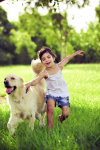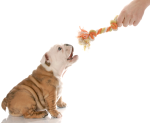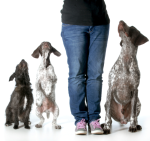
Butts up in the air, after a quick play bow, the dogs take off running, barking, jumping, chasing, growling, stalking and mouthing. Dogs having a good time playing together are quite a spectacle to watch! They can go from stalking…

Butts up in the air, after a quick play bow, the dogs take off running, barking, jumping, chasing, growling, stalking and mouthing. Dogs having a good time playing together are quite a spectacle to watch! They can go from stalking…

Dog bites hurt! Even when they don’t break skin, the mere pressure of the canine jaws is enough to inflict serious pain. Many of us have experienced at least one traumatic chomp. The speed and brutality of the act often…

Dogs and humans live together, play together, show affection, communicate and love each other. We develop deep bonds with one another and feel that we understand each other fairly well. Yet, when we look closely into the world of senses,…

When I first started to study dogs from a scientific perspective, finding research on canine behavior was a long and difficult task. It wasn’t just because at the time we didn’t have Internet and most of the publications had to…

If there is one subject that has been beat to death in the dog world, it’s certainly the notion of pack hierarchy in dogs! For the longest time everything was about leadership. Most dog behavior problems were interpreted as a…

When we compare the lives of wild animals to that of our pets, there is a striking difference in their activity levels. Dogs, cats, birds, hamsters and gerbils of all sorts, spend a large part of their days just lying…

When we’re unsure about a novel situation, our first response is to look around and check how others are reacting. This behavior is easy to spot when watching hidden camera TV shows where a person faced with an ambiguous situation…

From Rin tin tin to Lassie, Benjie and Beethoven, medium to large dogs have dominated the Hollywood scenes, the TV shows as well as our homes. Often statements of prosperity, leadership and strength, dogs convey a certain image we have…